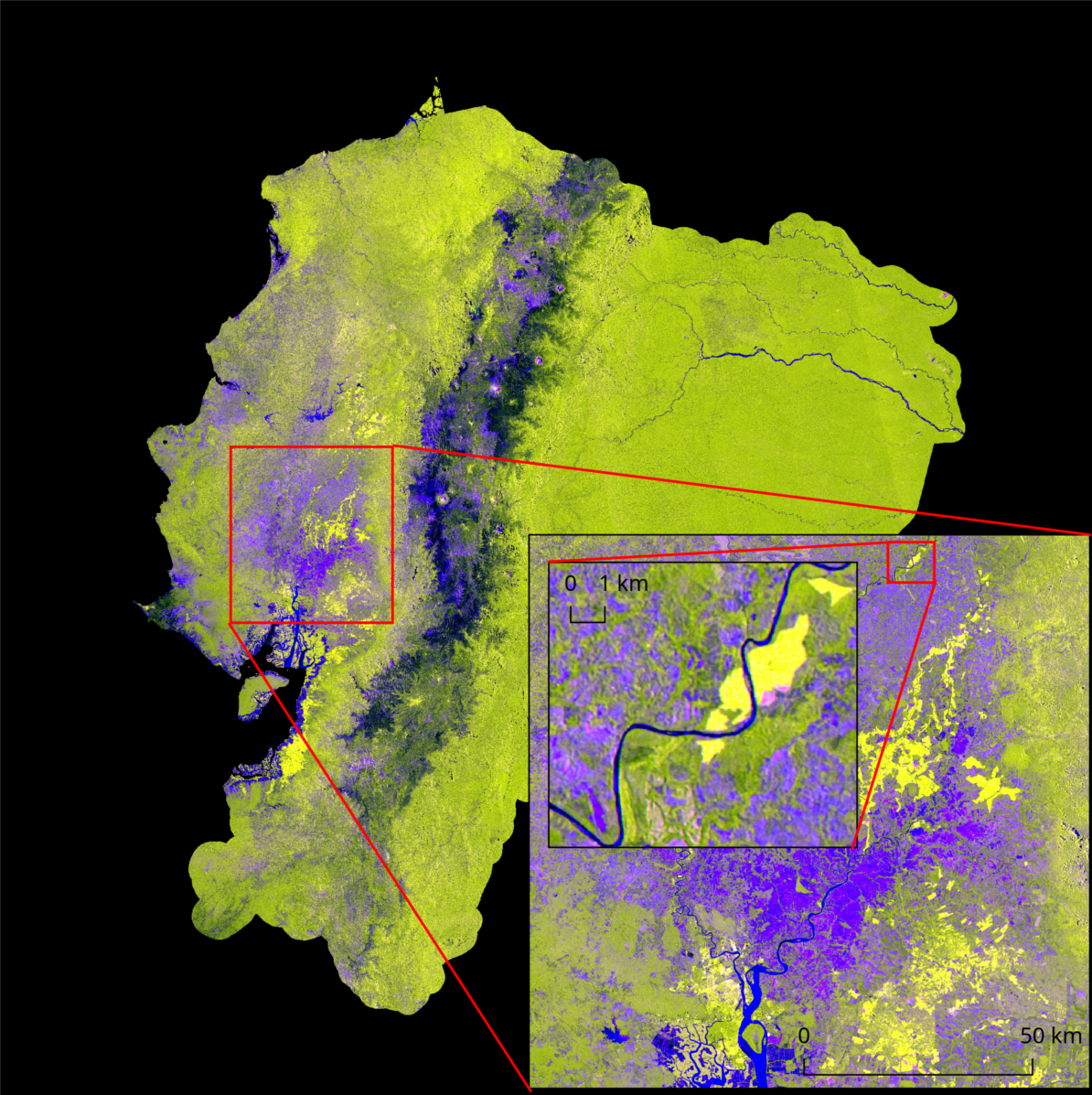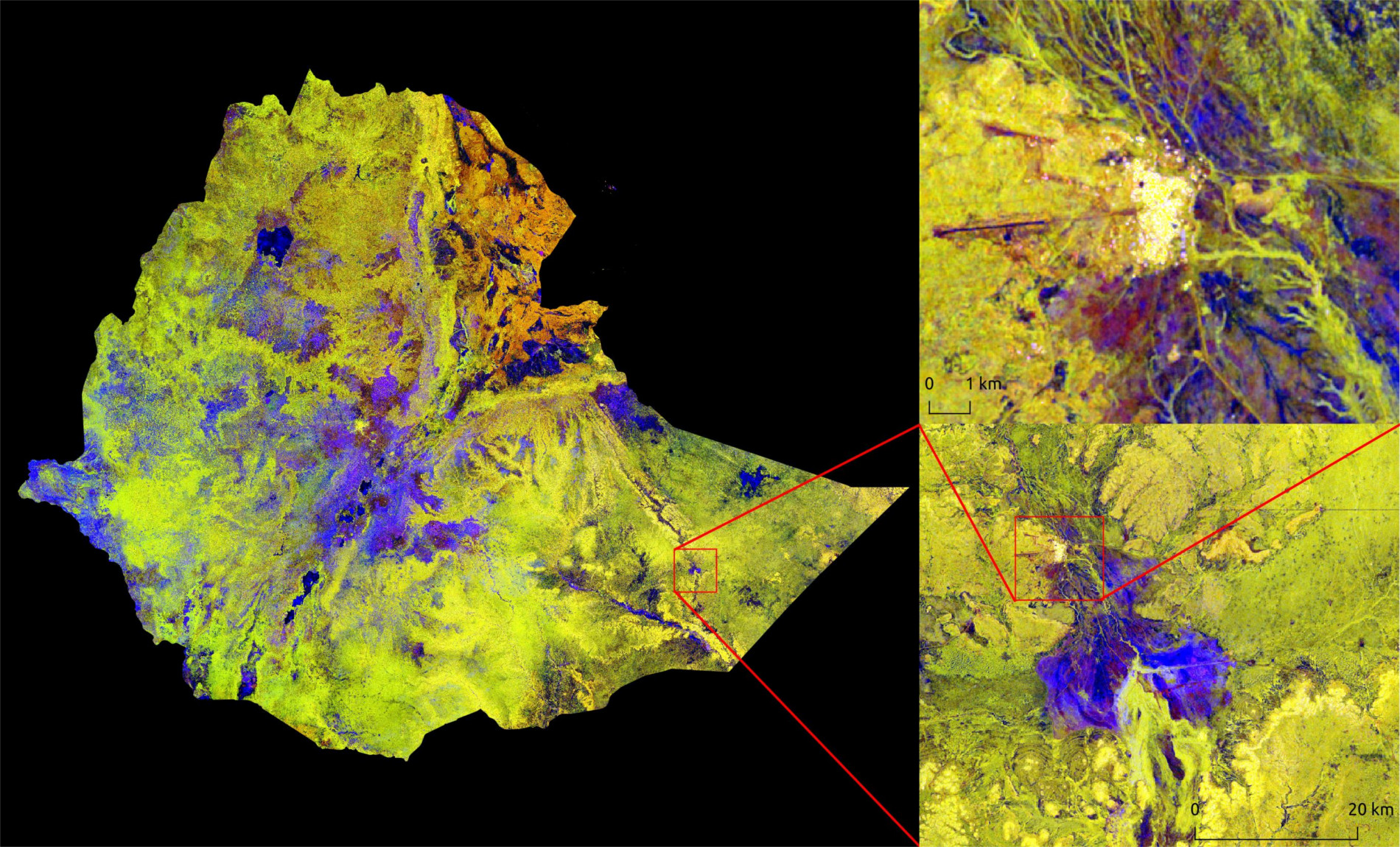High-level functionality for the inventory, download and pre-processing of Sentinel-1 data
Project description
Open SAR Toolkit (OST)
Objective
This python package lowers the entry barrier for accessing and pre-processing Sentinel-1 data for land applications and allows users with little knowledge on SAR and python to produce various Analysis-Ready-Data products.
Functionality
The Open SAR Toolkit (OST) bundles the full workflow for the generation of Analysis-Ready-Data (ARD) of Sentinel-1 for Land in a single high-level python package. It includes functions for data inventory and advanced sorting as well as downloading from various mirrors. The whole pre-processing is bundled in a single function and different types of ARD can be selected, but also customised. OST does include advanced types of ARD such as combined production of calibrated backscatter, interferometric coherence and the dual- polarimetric H-A-Alpha decomposition. Time-series and multi-temporal statistics (i.e. timescans) can be produced for each of these layers and the generation of spatially-seamless large-scale mosaic over time is possible a well.
The Open SAR Toolkit realises this by using an object-oriented approach, providing classes for single scene processing, GRD and SLC batch processing routines. The SAR processing itself relies on ESA's Sentinel-1 Toolbox as well as some geospatial python libraries and the Orfeo Toolbox for mosaicking.
You can find examplarotary Jupyter notebooks at https://github.com/ESA-PhiLab/OST_Notebooks for getting started.
Installation
Docker
Update!
Dockerhub is not permitting automatic builds. Therefore you need to build your own docker image using the DOCKERFIlE https://raw.githubusercontent.com/ESA-PhiLab/OpenSarToolkit/main/Dockerfile
The resulting docker image contains the full package, including ESA's Sentinel-1 Toolbox, Orfeo Toolbox, Jupyter Lab as well as the Open SAR Toolkit tutorial notebooks.
Docker installation is possible on various OS. Installation instructions can be found at https://docs.docker.com/install/
After docker is installed and running, launch the container with (adapt the path to the shared host folder and the name of the docke rimage at the very end):
docker run -it -p 8888:8888 -v /shared/folder/on/host:/home/ost/shared docker/image
The docker image automatically executes the jupyter lab and runs it on port 8888. You can find the address to the notebook on the command line where docker is running. Copy it into your favorites browser and replace 127.0.0.1 with localhost.
Manual installation
Dependencies
Sentinel Application Toolbox (SNAP)
OST bases mainly on the freely available SNAP toolbox for the SAR-specific processing routines. You can download SNAP from:
http://step.esa.int/main/download/
If you install SNAP into the standard directory, OST should have no problems to find the SNAP command line executable. Otherwise you need to define the path to the gpt file on your own during processing.
Make sure to use SNAP 8 with the latest updates installed.
Orfeo Toolbox
If you want to create mosaics between different swaths, OST will rely on the otbcli_Mosaic command from The Orfeo Toolbox. You can download Orfeo from:
https://www.orfeo-toolbox.org/download/
Make sure that the Orfeo bin folder is within your PATH variable to allow execution from command line.
Further dependencies (libs etc)
Ubuntu 18.04 and later:
sudo apt install python3-pip git libgdal-dev python3-gdal libspatialindex-dev nodejs npm libgfortran5
Any Operating system using (mini)conda https://www.anaconda.com/:
conda install pip gdal jupyter jupyterlab git matplotlib numpy rasterio imageio rtree geopandas fiona shapely matplotlib descartes tqdm scipy joblib retrying pytest pytest-cov nodejs
OST installation
You can use then use pip to install Open SAR Toolkit:
pip install opensartoolkit
Examples
Ecuador VV-polarised Timescan Composite
Year: 2016
Sensor: Sentinel-1 C-Band SAR.
Acquisitions: 6 acquisitions per swath (4 swaths)
Output resolution: 30m
RGB composite:
- Red: VV-maximum
- Green: VV-minimum
- Blue: VV-Standard deviation
Ethiopia VV-VH polarised Timescan Composite
Year: 2016-2017
Sensor: Sentinel-1 C-Band SAR.
Acquisitions: 7 acquisitions per swath (about 400 scenes over 8 swaths)
Output resolution: 30m
RGB composite:
- Red: VV-minimum
- Green: VH-minimum
- Blue: VV-Standard deviation
A note on its origin
Open SAR Toolkit was initially developed at the Food and Agriculture Organization of the United Nations under the SEPAL project (https://github.com/openforis/sepal) between 2016-2018. It is still available there (https://github.com/openforis/opensarkit), but has been completely re-factored and transferred into a simpler and less-dependency rich python3 version, which can be found on this page here. Instead of using R-Shiny as a GUI, the main interface are now Jupyter notebooks that are developed in parallel to this core package and should help to get started. (https://github.com/ESA-PhiLab/OST_Notebooks)
Author
- Andreas Vollrath, FAO (ex-ESA philab)
- Petr Sevcik, EOX
- James Wheeler, ESA philab
Project details
Release history Release notifications | RSS feed
Download files
Download the file for your platform. If you're not sure which to choose, learn more about installing packages.
Source Distribution
Built Distribution
Hashes for opensartoolkit-0.12.3-py3-none-any.whl
| Algorithm | Hash digest | |
|---|---|---|
| SHA256 | 261d4cacf76b08cd25c5014f0113cd49af9b1322c0cfb01e0952cd01aec68502 |
|
| MD5 | 444d32e54c0c3e1939579810be269640 |
|
| BLAKE2b-256 | fecf1ea7a6b1e77fd3b502a6ca5700ac79ed2eedd912b6eb47eac8bd64ef567a |














